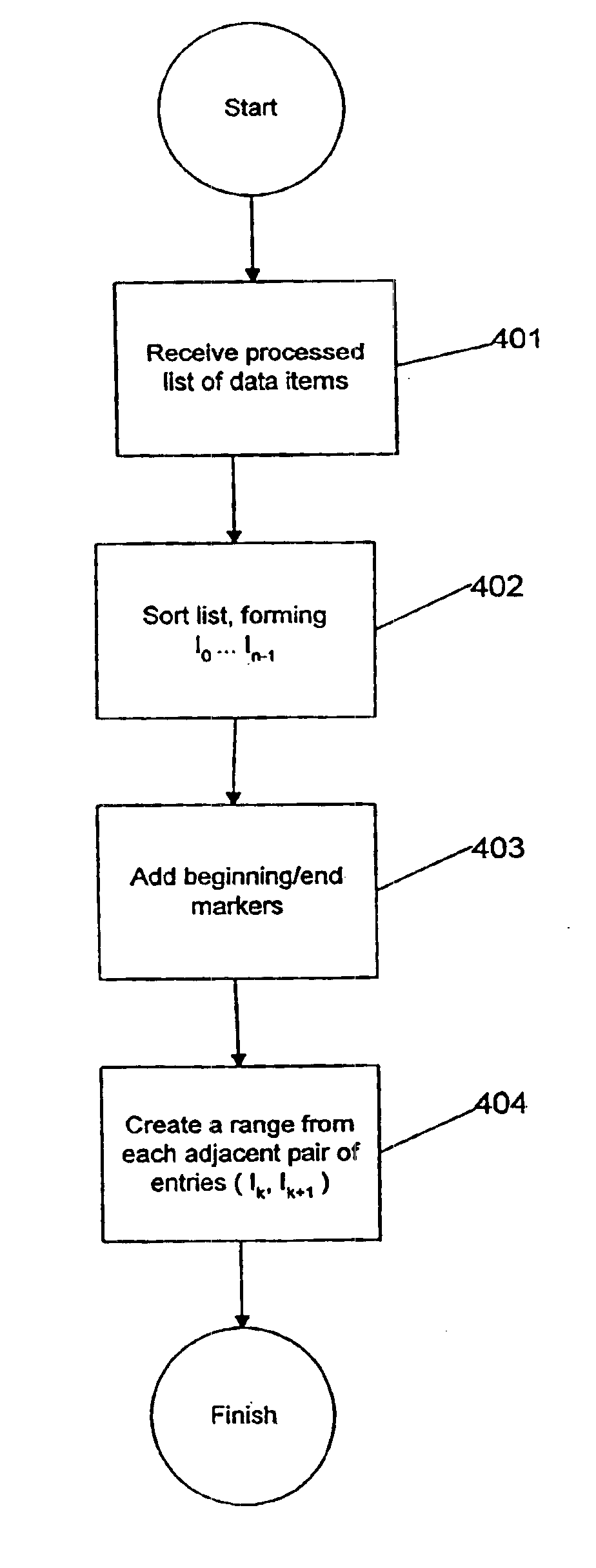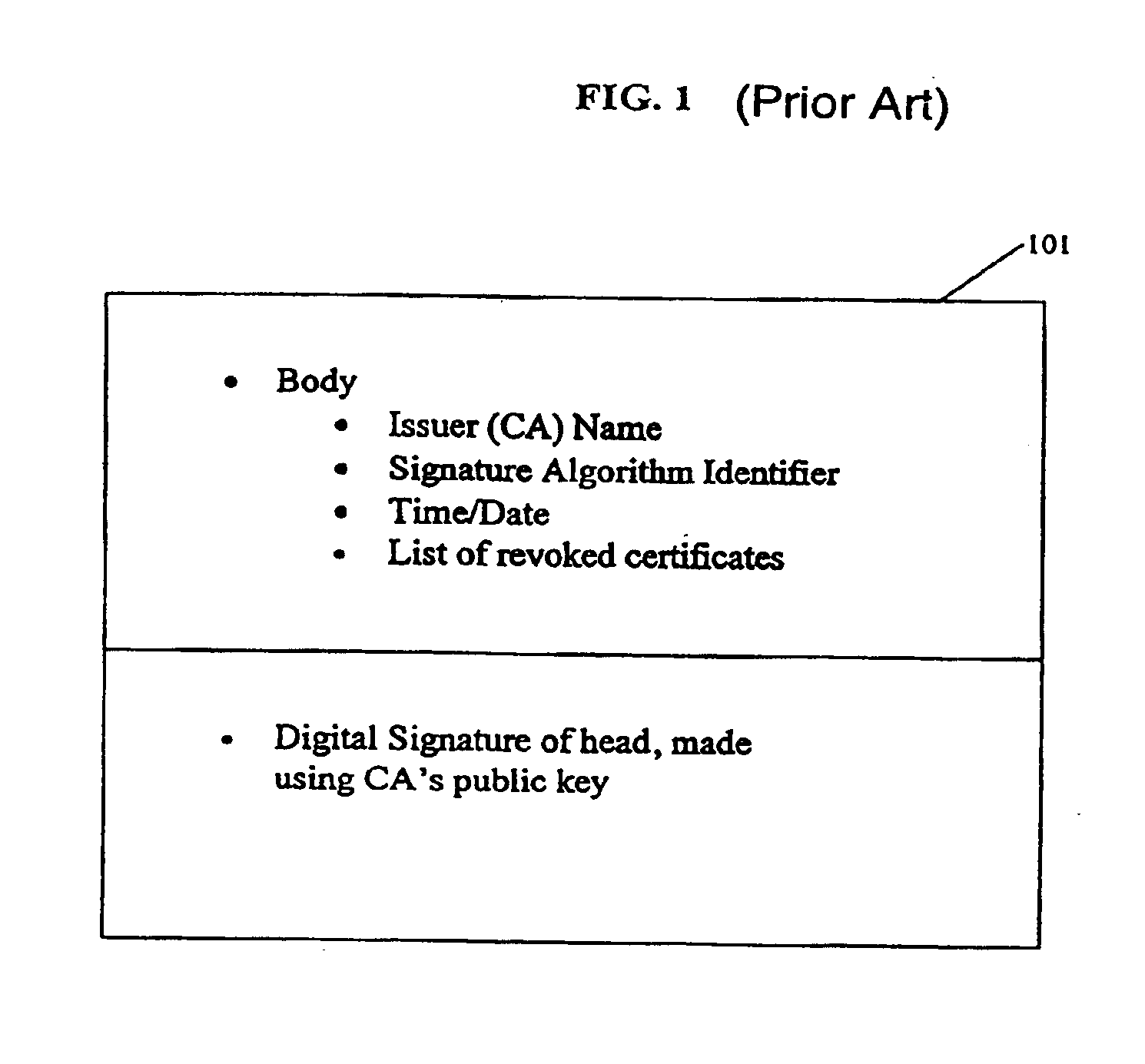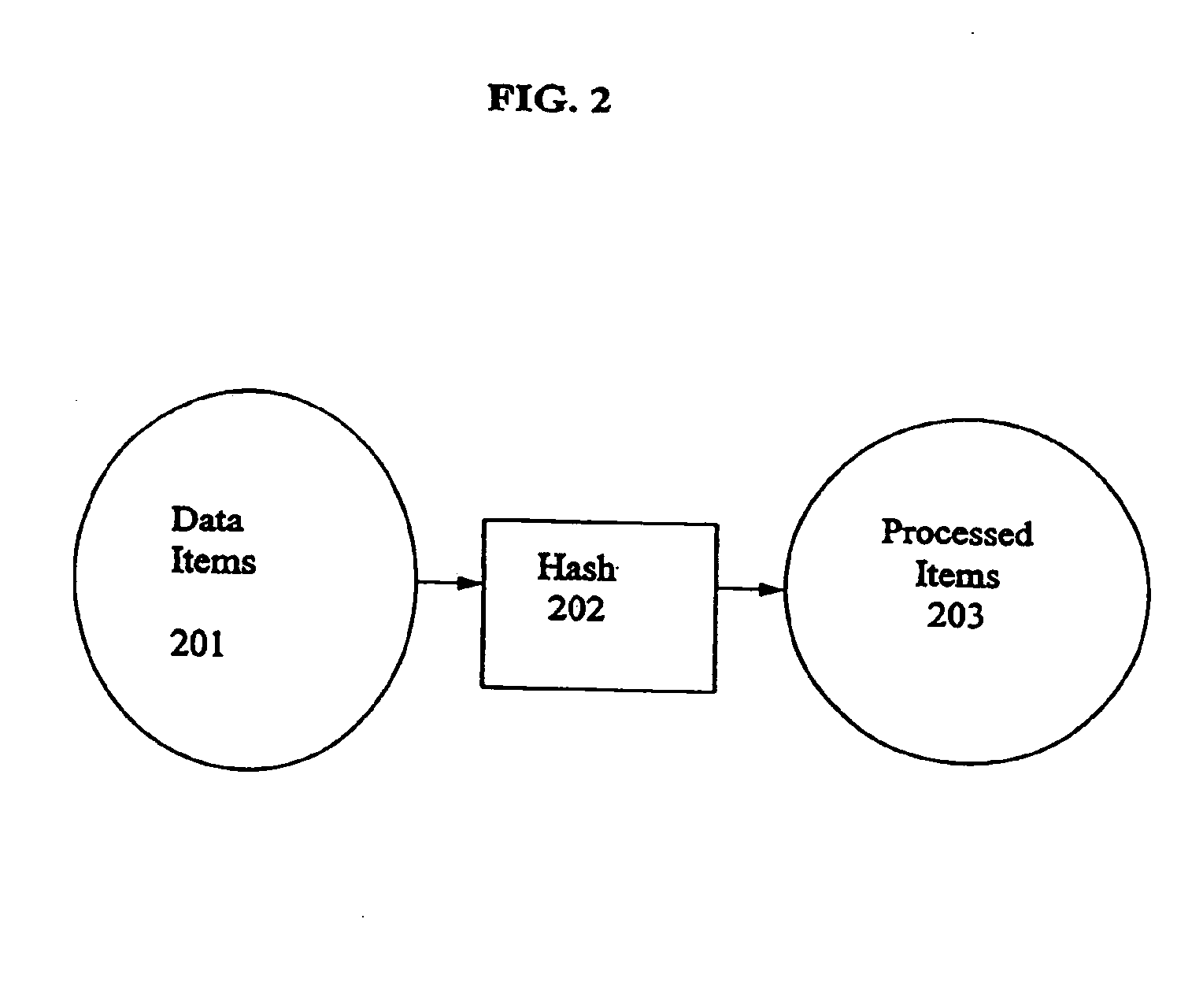Apparatus and method for demonstrating and confirming the status of a digital certificates and other data
a digital certificate and other data technology, applied in the field of data security, information security, and cryptography, can solve the problems of difficult design constraints, huge challenges, and often needed revoke of certificates, and achieve the effects of reducing processing effort, data storage, and data replication requirements
- Summary
- Abstract
- Description
- Claims
- Application Information
AI Technical Summary
Benefits of technology
Problems solved by technology
Method used
Image
Examples
Embodiment Construction
[0050]Methods and apparatuses are disclosed for constructing efficient cryptographically secure assertions as to whether candidate items are present on a list. In one embodiment of the invention, data items on the list are converted into a set of ranges having data items as endpoints such that there are no data items on the list between the endpoints of any range. The ranges are used as leaf nodes to construct a hash tree, then the tree's root node is digitally signed by the tree issuer. A verifier can determine the validity of a leaf node by checking the path from the leaf to the root node and by checking the digital signature on the root node. A valid leaf node with a range endpoint equal to a candidate data item provides cryptographic assurance that the candidate data item is present on the list. A valid leaf node with one range endpoint larger than the candidate data item and one range endpoint smaller than the candidate data item provides cryptographic assurance that the candid...
PUM
 Login to View More
Login to View More Abstract
Description
Claims
Application Information
 Login to View More
Login to View More - R&D
- Intellectual Property
- Life Sciences
- Materials
- Tech Scout
- Unparalleled Data Quality
- Higher Quality Content
- 60% Fewer Hallucinations
Browse by: Latest US Patents, China's latest patents, Technical Efficacy Thesaurus, Application Domain, Technology Topic, Popular Technical Reports.
© 2025 PatSnap. All rights reserved.Legal|Privacy policy|Modern Slavery Act Transparency Statement|Sitemap|About US| Contact US: help@patsnap.com



